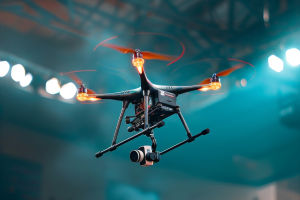Hey Lykkers! 🚀 Picture this: you’re flying a drone — but not just anywhere. We’re talking Mars. That’s right — the red, dusty planet with wild dust storms, bone-chilling nights, and barely any atmosphere. Sounds like the last place a drone could take off, right?
Well, it’s not science fiction. It’s science fact.
NASA’s already done it — and the tech behind it is seriously mind-blowing.
Let’s break down how drones manage to fly in those extreme Martian conditions — and what it means for the future of exploring worlds beyond our own.
Why Use Drones on Mars Anyway?
You might be thinking — Mars already has rovers, right? And they’ve done a solid job crawling around, snapping pics, and analyzing rocks.
True! But Mars is a massive planet with cliffs, craters, and rough spots rovers can’t reach. That’s where drones shine. They can:
- Fly over dangerous or tricky terrain
- Help scout new paths for rovers
- Take aerial images from a bird’s-eye view
- Cover more ground in less time
Basically, a drone is like Mars’s own little flying explorer. It makes missions more flexible, faster, and safer.
But Wait… How Can Anything Fly on Mars?
Here’s where it gets mind-blowing. Mars has a super thin atmosphere — just 1% of Earth’s. That means less air for lift, which is kind of important when you’re trying to get off the ground.
To deal with that, Mars drones are built with:
- Larger, lightweight blades that spin ultra-fast
- Compact designs to keep them light as a feather
- Autonomous flying ability because real-time control from Earth isn’t possible (signals take minutes to travel!)
In other words, they’re like flying ninja-bots: small, smart, and efficient.
Meet Ingenuity: The Martian Drone Pioneer
NASA’s Ingenuity helicopter hitched a ride to Mars with the Perseverance rover in 2021. At first, it was just a tech experiment — could it fly at all in such tough conditions?
Well, not only did it fly, but it smashed expectations. What was supposed to be just 5 test flights turned into dozens. Ingenuity became a real scout, helping Perseverance navigate the landscape from above.
It’s solar-powered, weighs less than 2 kg (about 4.5 lbs), and spins its blades over 2,000 times per minute. Crazy, right?
What’s the Catch?
Of course, flying on Mars isn’t perfect. Challenges include:
- Extreme cold that can destroy batteries
- Dust storms that mess with visibility and solar power
- No GPS (so it navigates using cameras and sensors)
- Major time delays for commands from Earth
But engineers are learning fast, and each mission teaches us more.
The Future of Flying on Mars
With Ingenuity proving it’s possible, space agencies are dreaming bigger:
- More drones for future Mars missions
- Advanced aerial scouts with sensors and tools
- Maybe even drones building shelters for astronauts one day
We’re talking about a whole new way to explore alien worlds — not just with wheels, but with wings.
Final Thoughts
So Lykkers, can drones fly on Mars?
Yep — and they already are. It’s not science fiction anymore. It’s smart engineering, bold thinking, and a big leap for space exploration. Who knows? Maybe one day, you could help design the next Martian flyer. Let’s keep dreaming (and flying) big!


